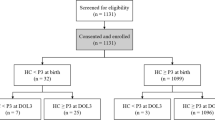Abstract
Microcephaly is defined as a head circumference measurement of 2 or 3 standard deviations below the mean for age and sex. However, distinguishing the value of −2 or −3 standard deviations as a cutoff is relevant in the clinical practice, since the limit of −3 standard deviations is more frequently associated with cognitive impairment. The use of ultrasound scans in pregnancy has allowed the identification of subjects with a measurement of the head circumference at the limit of the cutoff for gestational age, but who do not subsequently show cognitive delay. The same is true for newborns with a −2 to −3 standard deviations cutoff, and without anomalous clinical signs, for which a cognitive delay is not easily diagnosed. In this case, to define an infant as being affected by microcephaly (with a prognosis usually recognized as harmful) may be unnecessarily distressful for parents or caregivers. In the cases mentioned, resuming the word “small head” instead of microcephaly to define such subjects could be more appropriate and more appreciated.
Similar content being viewed by others
References
Sniderman A (2010) Abnormal head growth. Pediatr Rev 31:382–384
Pavone P. Praticò AD, Falsaperla R, Rizzo R, Ruggieri M (2017) A clinical approach to megalencephaly: a large brain as a possible sign of cerebral impairment. Medicine 96(26):e6814
Abuelo D (2007) Microcephaly syndromes. Semin Pediatr Neurol 14:118–127
Gilmore EC, Walsh CA (2013) Genetic causes of microcephaly and lessons for neuronal development. Wiley Interdiscip Rev Dev Biol 2:461–478
Stark AE (2016) The genetic epidemiology of the form of microcephaly ascribed to mutation at the WDR62 locus. Ann Transl Med 4:281
Kaindl AM, Passemard S, Kumar P, Kraemer N, Issa L, Zwirner A, Gerard B, Verloes A, Mani S, Gressens P (2010) Many roads lead to primary autosomal recessive microcephaly. Prog Neurobiol 90:363–383
Yelgeç S, Oztürk MH, Aydingöz U, Cila A (1998) CT and MRI of microcephalia vera. Neuroradiology 40:332–334
Jackson AP, Eastwood H, Bell SM et al (2002) Identification of microcephalin, a protein implicated in determining the size of the human brain. Am J Hum Genet 71:136–142
Bond J, Roberts E, Mochida GH, Hampshire DJ, Scott S, Askham JM, Springell K, Mahadevan M, Crow YJ, Markham AF, Walsh CA, Woods CG (2002) ASPM is a major determinant of cerebral cortical size. Nat Genet 32:316–320
Kumar A, Girimaji SC, Duvvari MR, Blanton SH (2009) Mutations in STIL, encoding a pericentriolar and centrosomal protein, cause primary microcephaly. Am J Hum Genet 84:286–290
Guernsey DL, Jiang H, Hussin J et al (2010) Mutations in centrosomal protein CEP152 in primary microcephaly families linked to MCPH4. Am J Hum Genet 87:40–51
Bilgüvar K, Oztürk AK, Louvi A et al (2010) Whole-exome sequencing identifies recessive WDR62 mutations in severe brain malformations. Nature 467:207–210
Yu TW, Mochida GH, Tischfield DJ et al (2010) Mutations in WDR62, encoding a centrosome-associated protein, cause microcephaly with simplified gyri and abnormal cortical architecture. Nat Genet 42:1015–1020
Nicholas AK, Khurshid M, Désir J et al (2010) WDR62 is associated with the spindle pole and is mutated in human microcephaly. Nat Genet 42:1010–1014
Chu A, Heald-Sargent T, Hageman JR (2017) Primer on microcephaly. NeoReviews 18:1–19
Hennekam RC, van Rhijn A, Hennekam FA (1992) Dominantly inherited microcephaly, short stature and normal intelligence. Clin Genet 41:248–251
Dolk H (1991) The predictive value of microcephaly during the first year of life for mental retardation at seven years. Dev Med Child Neurol 33:974–983
von der Hagen M, Pivarcsi M, Liebe J, von Bernuth H, Didonato N, Hennermann JB, Bührer C, Wieczorek D, Kaindl AM (2014) Diagnostic approach to microcephaly in childhood: a two-center study and review of the literature. Dev Med Child Neurol 56:732–741
Pavone L, Sorge G, Li Volti S, La Rosa M, Prato F, Mollica F (1980) Il “cranio piccolo” (microcefalia senza ritardo mentale). Descrizione di alcuni mebri di una famiglia. Ped Med Chir 2:827–828
Rizzo R, Pavone L (1995) Autosomal-recessive microcephaly in two siblings, one with normal IQ and both with protruding mandible, small ears, and curved nose. Am J Med Genet 59:421–425
Abdel-Salam G, Czeizel AE (2000) The second unrelated case with isolated microcephaly and normal intelligence (microcephalia vera). Clin Dysmorphol 9:151–152
Gelber SE, Grünebaum A, Chervenak FA (2017) Prenatal screening for microcephaly: an update after three decades. J Perinat Med 45:167–170
Author information
Authors and Affiliations
Corresponding author
Rights and permissions
About this article
Cite this article
Pavone, P., Praticò, A.D., Ruggieri, M. et al. Resuming the obsolete term “small head”: when microcephaly occurs without cognitive impairment. Neurol Sci 38, 1723–1725 (2017). https://doi.org/10.1007/s10072-017-3079-2
Received:
Accepted:
Published:
Issue Date:
DOI: https://doi.org/10.1007/s10072-017-3079-2




